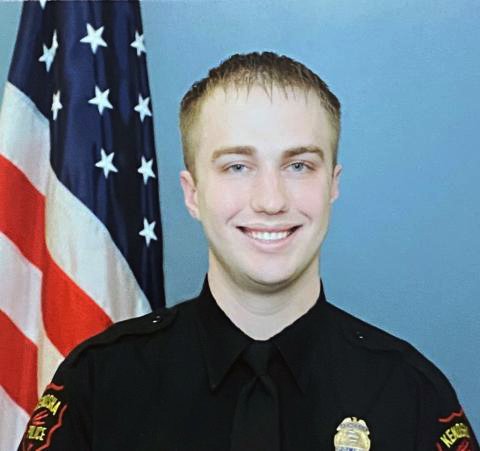The white police officer who shot Jacob Blake in Wisconsin last summer was suspended for three days this year because his service weapon was stolen just weeks after the shooting that left the Black man partially paralyzed.
Officials waited seven months to investigate and the weapon is still missing, WISN-TV reported.
Kenosha Police Officer Rusten Sheskey reported on Sept. 15 that his Glock 17 service weapon had been stolen that day, apparently from inside his girlfriend’s car, Kenosha Police Lt. Joseph Nosalik told the TV station. That was a loaner weapon Sheskey was given after the Wisconsin Department of Justice investigators seized the one used to shoot Blake on Aug. 23.
The investigation into the theft did not begin until April, seven months after it happened, and three months after Kenosha County District Attorney Michael Graveley announced that he was not seeking criminal charges against Sheskey in the Blake shooting.
The Kenosha police chief, Daniel Miskinis, had all the information about the theft but waited to see what the charging decision would be, Nosalik told WISN-TV. After Sheskey returned to work on March 31, Nosalik said the chief told him to begin the investigation into the gun theft.
Sheskey told investigators he regularly left the weapon in his girlfriend’s locked vehicle, according to a memo from Nosalik to Kenosha Police senior management, WISN reported. Sheskey said he had secure locations for firearms at his Kenosha home, but that he moved after receiving death threats and “did not have an opportunity to provide a safe location inside the home in which he was now living in,” Nosalik wrote.
“Sheskey did say that he believed that the night the firearm was stolen, the glovebox had been locked, as this had become a common practice,” the memo said. But his girlfriend was “unsure if she locked the vehicle after leaving,” an officer wrote in the Racine police report on the theft.
Nosalik recommended on April 14 that Sheskey be suspended without pay for the policy violation. Sheskey accepted the three-day suspension on April 15.
“I did not get the feeling that this was a lackadaisical officer sitting in my office thinking that this was no big deal,” Nosalik said. “To him it was a very big deal.”
Sheskey shot Blake seven times after he and two other Kenosha officers tried to arrest Blake on an outstanding warrant. A pocketknife fell from Blake’s pants during a scuffle. He said he picked it up before heading to a vehicle to drive away with two of his children in the back seat. He said he was prepared to surrender once he put the knife in the vehicle. Sheskey told investigators that he feared for his own safety.
The shooting happened three months after George Floyd was killed by former Minneapolis police officer Derek Chauvin, who was convicted of murder and manslaughter charges.
(AP)











2 Responses
The story of the stolen gun in the locked car is the fishiest story I have ever heard.
This is completely irrelevant. The bottom line is that Blake was resisting arrest and attempting to flee. THE SUPREME COURT DID NOT ABOLISH THE FLEEING FELON RULE. It merely said that nowadays when there are so many new felonies the rule only applies to dangerous felons, not to everyone who commits some trivial crime that the legislature has made a felony. But dangerous felons are still covered, and there’s no question that Blake was one. Therefore even if he had been completely unarmed, the police would have had the right to shoot him simply to stop his escape. Their duty was to arrest him, and letting him run loose would have been a breach of that duty. If he had committed further crimes and hurt more people it would have been the fault of the police who let him go.